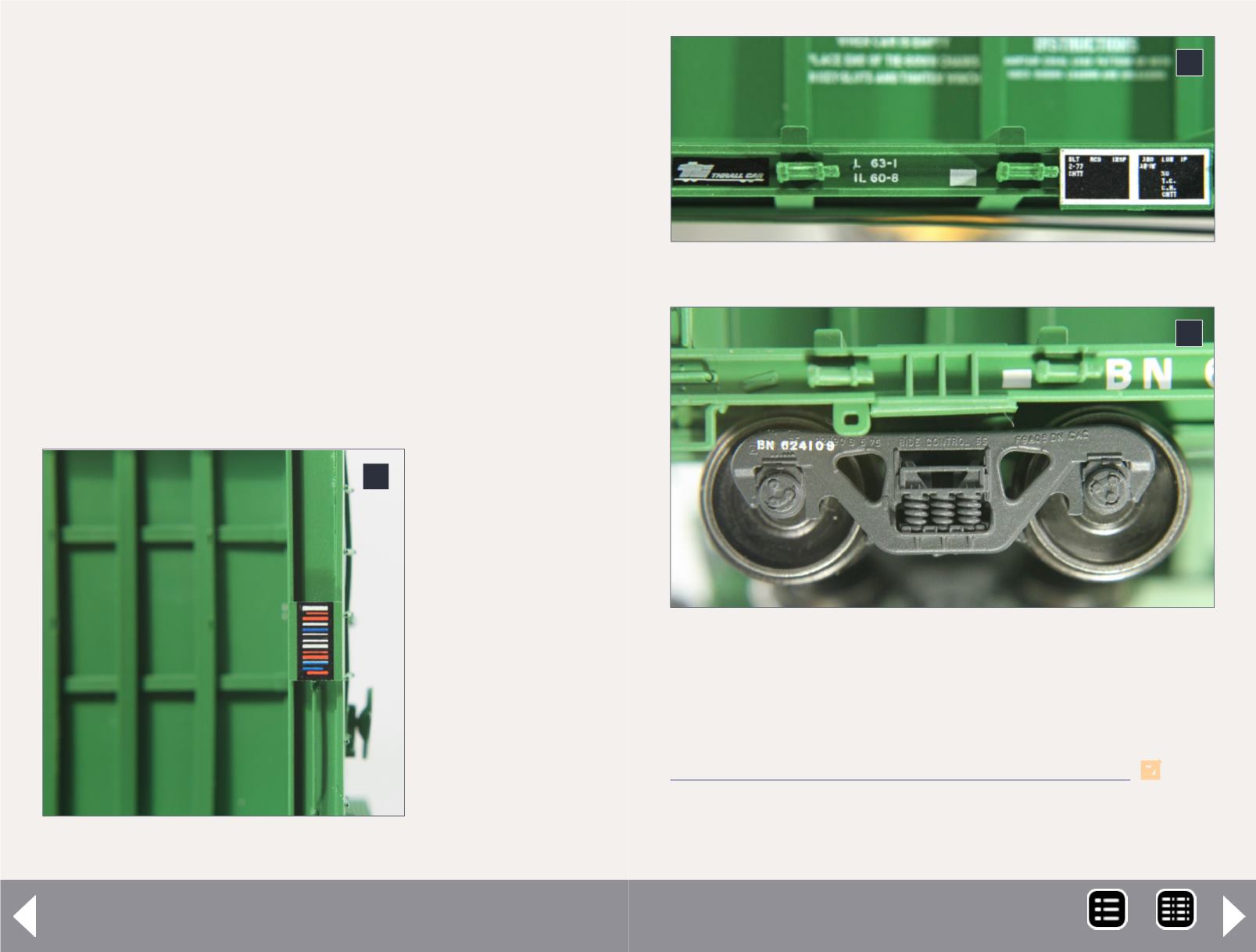
kit of years ago was a 60' opera window version. The company
also offered a truss version. The spidery truss weighed less
than the sheet-steel “opera window” beam and allowed load-
ing longer cars to 100 tons.
The car floors have risers that tilt slightly to the center to
counteract the tendency of loads to vibrate over the car
side. The riser lets the forks of lift trucks slip under the loads.
Sophisticated cable and winch tie-downs secure loads, and
allow them to be placed in units that can be handled by fork-
lifts. Plain bulkhead cars and flats need to have their loads
interleaved and strapped to become a single piece.
Loading and unloading areas for beam cars are usually graveled
or hard-surfaced to the top of the rails so forklifts can access
both sides. The cars have to be loaded and unloaded evenly;
trying to load one
side first and then
the other will
cause the car to
tip over.
Gunderson built
cars very simi-
lar to the origi-
nal Thrall design.
Trinity Railcar and
National Steel Car
have built truss-
design beam cars.
An excellent arti-
cle by D. Scott
Chatfield on the
5: Closeup of ACI barcode.
5
First Look: Center-beam flatcar - 3
6: Closeup of Thrall Car logo and data box printing.
6
7: Closeup of truck detail.
7
development of center-beam flat cars appeared in
Railmodel
Journal
in January 1996.
BNSF car data:
MRH-Nov 2013


